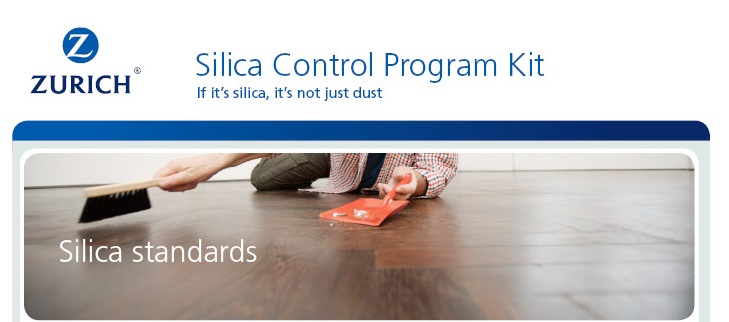

                |
Mine Safety Health Administration (MSHA) Permissible Exposure Limits Most of the current MSHA PELs for the mining industry, cited in 30 CFR § 56.5001 and 30 CFR § 57.5001, are the ACGIH TLVs adopted in 1973. As of February, 2017, the current MSHA PEL-TWA for respirable silica is calculated from the following formula and compared to respirable dust exposures. 10 mg/m3 (% Respirable Quartz) + 2 The MSHA PELs for cristobalite and tridymite are 1/2 the value calculated for Quartz. Several websites that follow MSHA, such as Aggregates Manager and Lexology,
have reported that MSHA is in the process of developing a
Respirable Crystalline Silica rule that will establish a new PEL for
work activities subject to MSHA regulation. The MSHA website should be consulted for updates on the Silica rule-making process. Comparing Air Sampling Results to the MSHA PEL.
The calculated PEL (see formula above) used by MSHA
is compared to the respirable particulate results obtained from the analysis of breathing zone samples.
Thus, the calculated respirable dust PEL-TWA = 1.7 mg/m3.
Thus, the calculated respirable dust PEL-TWA = 0. 37 mg/m3. Mixtures of Silica Types Whenever a mixture of quartz, cristobalite and/or tridymite occurs, a special mixture calculation is performed to calculate the correct PEL. Calculating the PELs separately and comparing them to the exposure to the individual components would underestimate the hazard. Sample calculation for a mixture of crystalline silica: Two consecutive samples from the same employee taken from a combined exposure to crystalline silica dusts have the following results:
Calculation of the TWA from sampling and analytical data: Step No. 1: Calculate the percentage of quartz, cristobalite
and tridymite in the respirable particulate collected,
b. Cristobalite:
c. Tridymite: None detected = 0%
Step No. 3: Calculate the employee's exposure to respirable dust
Step No. 4: Adjust (where necessary) for sampling period less than 8 hours. Assume a zero exposure time for the sampling period remaining.
Step No. 5: Calculate the severity of the exposure:
If the result from Step 5 is greater than 1. 0, then an overexposure to the mixture of crystalline silica exists. ACGIH® Threshold Limit Values (TLVs®)An
internationally recognized source of occupational health standards are
the Threshold Limit Values (TLVs) developed by the American Conference
of Governmental Industrial Hygienists (ACGIH). The ACGIH TLVs are
published annually for use by professionals trained in the practice of
industrial hygiene. The TLVs are guidelines and are not designed
to be used as standards, nevertheless, ACGIH is aware that in certain
instances, the TLVs are used as standards by national, state, or local
governments. In order to minimize the potential for adverse health effects from exposure to silica, corrective actions should be taken when air sampling results show employee silica exposures exceed the recommended ACGIH TLV-TWA. The TLV-TWA (Time Weighted Average) is that concentration for a conventional 8-hour workday and a 40-hour work week to which it is believe nearly all workers may be repeatedly exposed, day after day, for a working lifetime without adverse effect. The TLVs are updated annually, and in 2008, the current (2016) TLV-TWA of 0.025 mg/m3 for crystalline quartz and cristobalite was published. The current TLV-TWA for respirable silica (quartz and cristobalite) is the same as the OSHA Action Level for General Industry and Construction. The TLV includes the A2, Suspected Human Carcinogen, notation. This notation is based upon the demonstrated association between lung cancer and the presence of silicosis. The TLV is more stringent than the 0.05 mg/m3 PEL for respirable crystalline silica (all forms), thus providing a higher level of protection. Information regarding the current ACGIH TLV-TWA for silica can be obtained by contacting the ACGIH at (http://www.acgih.org/) or your Zurich Services Corporation representative. (Top) TLVs for Extended Work Shifts Application of TLVs for workers
on work schedules markedly different from the conventional 8-hour day, 40-hour
week requires judging the impact of extended exposure to chemicals due to
extended work shifts. The following
formula, developed by Brief & Scala,
reduces the TLV proportionately for both increased exposure time and reduced
recovery (non-exposure) time from extended work shifts.
In
order to account for variability in exposures which occurs from day to
day, an Action Level is often used when initial survey results are
evaluated. The OSHA Action Level of 0.025 mg/m3 is 50% of the OSHA PEL-TWA of 0.05 mg/m3,
and equal to the ACGIH TLV-TWA. Exposures at or above the OSHA
Action Level trigger specific requirements of the OSHA Silica
standards. Given the ACGIH TLV for crystalline quartz and cristobalite is 0.025 mg/m3, the advisory Action Level would be 0.0125 mg/m3 for 8-hours, and lower if employees work an extended shift (See TLVs for Extended Work Shifts). When initial sampling results fall below the Action Level, there is a statistical basis for concluding that day-to-day variability does not result in a significant number of days where the exposure would exceed exposure limits. Survey results between the Action Level and the exposure limit indicate a potential for a significant number of days where exposure above the PEL/TLV may be found, unless the initial sampling results represents a "worst-case" scenario. Additional sampling may demonstrate repeated daily exposures below the PEL/TLV or a significant number of days when the PEL is exceeded. Thus exposures above the Action Level prompt action to control exposures where limited quantitative sampling data is available. In operations where day-to-day exposures are highly variable and job conditions change rapidly, controlling exposures below the Action Level reduces the chance that the exposure limits are exceeded on higher productions days. (Top) © 2017 The Zurich Services Corporation. All rights reserved. | ||||||||||||||||||||||||||||||||||||||||||||||||||||||||||||||||||||||||||||